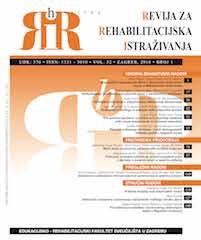Pripovjedne sposobnosti djece s Downovim sindromom i djece s Williamsovim sindromom
Narrative abilities of children with Down syndrome and children with Williams syndrome
Author(s): Višnja Pranjic, Emica Farago, Dijana ArapovicSubject(s): Education, Cognitive Psychology, Developmental Psychology, Neuropsychology
Published by: Sveučilište u Zagrebu, Edukacijsko-rehabilitacijski fakultet
Keywords: Down syndrome; Williams syndrome; expressive language ability; narration;
Summary/Abstract: Down syndrome (DS) is the most common chromosomopathy, with an incidence of 1:600. Williams syndrome (WS) is a rare neurodevelopmental disorder with an incidence of 1:7500-20000. Persons with these disorders have comparable cognitive deficits, but different language abilities. The goal of this research was to test the narrative ability of children with DS and children with WS and compare them with the narrative abilities of children with typical language development. The research was carried out on a sample of 40 children with DS, 5 children with WS and 40 children with typical language development. The children were paired by receptive age. For receptive age assessment we used the Peabody Picture Vocabulary Test (PPVT-III-HR; Kovačević et al., 2009). Narrative abilities were tested on two variables: storytelling and verbal description of the mother. The results of a robust discriminant analysis showed statistically significant differences between children with Down syndrome (DS), children with Williams syndrome (WS) and children with typical language development. As we had assumed, the children with DS achieved significantly lower results than the children with WS and the children with typical development. However, no statistically significant difference was found in narrative ability–storytelling between the children with WS and the children with typical language development, they did show a signifi cant statistical difference in narrative ability – description of the mother. These results indicate that the narrative abilities of children with WS are relatively well developed, which is not the case for children with DS.
Journal: Hrvatska revija za rehabilitacijska istraživanja
- Issue Year: 52/2016
- Issue No: 1
- Page Range: 1-16
- Page Count: 15
- Language: Croatian

